 
|
     |
[Free Tour]
|
| Date / Time |
April 8 (Tuesday, 2014) / 09:00~18:30 |
| Price |
Free |
| Itinerary |
COEX -> Samsung D’light -> National Museum of KOREA -> Lunch
-> Seoul Transport Operation & Information Service -> Digital Pavilion -> COEX |
| Conditions |
Tour Program, Coach, Guide, Lunch & refreshments |
| Maximum number of participants |
60 people |
|
| Detailed Itinary |
| Location |
Time |
|
Contents |
| COEX |
09:00 |
09:30 |
Meeting and Departure |
| Samsung D’light |
09:30 |
10:30 |
|
| The National Museum of KOREA |
11:00 |
12:00 |
|
| Lunch |
12:00 |
13:00 |
Maru (Korean Style Food) |
| Seoul Transport Operation & Information Service |
13:30 |
15:30 |
|
| Digital Pavilion |
16:00 |
17:30 |
|
| COEX |
18:30 |
|
Arrival |
|
| MAP OF SEOUL WITH TOUR LOCATIONS |
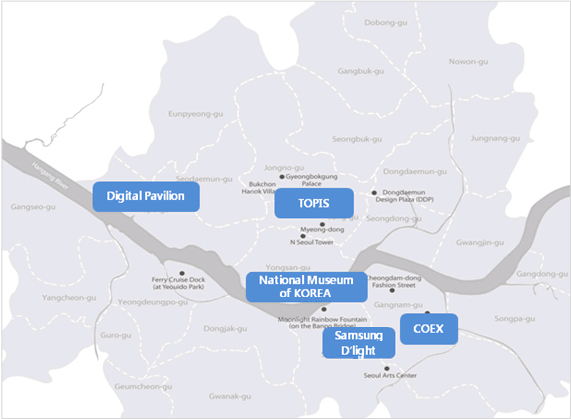 |
| Introduce of Visit places |
 Samsung d’light Samsung d’light
Located within the Samsung Electronics building in Seocho-dong, Seoul, ‘Samsung d’light’ is a global exhibition space that showcases the latest product lineup by Samsung Electronics. The name d’light combines the words ‘digital’ and ‘light’ to correlate with the company’s vision of being ‘a guiding light to the digital world’ and sharing the excitement and delight of digital technology through interaction with visitors. The ‘d’ also carries with it the connotation of ‘dynamic,’ ‘dream,’ and ‘diversity.’
The three-storied exhibition space is not merely a display of electronic products, but a space of interaction that allows visitors to experience new life patterns through state-of-the-art digital technology categorized by theme. A variety of hands-on features are available at the digital lounge (B1F), the mobile plaza (1F), and the global gallery (2F).
Duration : Approx. 1 hour |
|
 The National Museum of KOREA The National Museum of KOREA
The National Museum of Korea is located only 1.5km away from Yongsan Station. It is the largest museum in Korea and houses precious Korean cultural assets that silently tell the story of Korea’s fascinating history, from ancient days to the modern era. The museum, in turn, is close to Yongsan Family Park, a wooded grassland with a pond that serves as a natural habitat for various species of birds, as well as over 80 different kinds of trees. The War Memorial of Korea is located approximately 1km from Yongsan Station toward Samgakji. It displays a daunting array of collections and wartime relics.
In addition to galleries with a wide array of national and international pieces, the National Museum of Korea is the stage for a number of cultural activities related to relics collection and preservation, research and analysis, social training, academic publications, international cultural exchange programs, concerts, and more. Visitors of all ages have the opportunity to participate in a number of educational events and quality cultural programs. For those who prefer to tour at a leisurely pace, the museum grounds have a number of environmentally friendly spaces and rest areas.
Duration : Approx. 1 hour |
|
Maru(Lunch)
In the premium Korean restaurant , Korean word for the sky or a high place, you can enjoy relaxing time with a great view of the ‘Reflecting Pond’ at the center of the museum. Maru is recommended for luxury meals with your special guests, family, and lover. You can have a Korean course meal for which the chef of the Plaza hotel carefully selected ingredients and gave a modern twist to traditional recipes.
Duration : Approx. 1 hour |
|
Seoul Transport Operation & Information Service
Seoul Transport Operation & Information Service(below Seoul TOPIS) is the universal traffic management system of Seoul. Introduce Seoul City’s Management system to other country. Main facilities are BMS, Traffic Card System and Automated Control System.
Duration : Approx. 2 hour |
|
Digital Pavilion
Digital Pavillion, located inside Digital Media City in Sangam-dong, offers visitors a look into IT-related products in its ubiquitous lifestyle experience center.
Covering a total area of 9,721㎡, the four-story building holds about 40 items on display. The Exploration Hall on the second floor and the Imagination Hall on the third floor are especially popular among children.
Duration : Approx. 1 and half hour |
|
[Full day]
|
| Date / Time |
April 8. (Tuesday, 2014) / 08:30~17:30 |
| Price |
KRW 70,000/Person (Min. 30 People) |
| Itinerary |
COEX->DMZ Tour->Paju Premium Outlets->COEX |
| Conditions |
- Including all admission fees
- Transportation by bus
- With an English speaking guide assistance
- Including lunch at local restaurant
|
|

Demilitarized Zone is now the only cold war area in the world after the collapse of the Berlin wall and ongoing peace negotiations are still head at the truce village periodically. |
|

Imjingak was built in 1972 with the hope that someday unification would be possible. Three-storied Imjingak is surrounded by several Monuments, Unification Park and North Korea Center. Imjingak is now one of the famous tourist spots for foreigners because it is possible to visit without going through any security check poits. |
|

The 3rd Tunnel was discovered on October 17, 1978. It is located 52km from Seoul. It was estimated that it took approximately an hour for 10,000 soldiers to move through the tunnel. When this tunnel was first discovered, North Koreans insisted it was made by South Koreans in a plot to invade North Korea. However, this theory proved eventually to be false. |
|
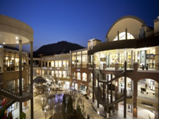
Paju Outlet – The three-story building has 165 shops and is known as having the largest number of individual brand stores in Korea (20 in total). Discounts at the outlets range from 25% to and 65% and include everything from clothing to jewelry and housewares (such as Creuset and Royal Albert). Some brands are even offered at a lower price than quoted in the duty free shops. The outlet center also provides shoppers with various conveniences such as restaurants and numerous places to sit and take a rest. |
|
[Half Day-1]
|
| Date / Time |
April 8. (Tuesday, 2014) / 13:00~17:00 |
| Price |
KRW 67,000/Person (Min. 20 People) |
| Itinerary |
COEX->Korean Folk Village ->COEX |
| Conditions |
- Including all admission fees
- Transportation by bus
- With an English speaking guide assistance
- Excluding lunch
|
|

DThe Korean Folk Village is open all year-round and nearly 1.8 million domestic and foreign tourists visit here throughout the year. The Folk Village is a venue
where visitors can learn Korean culture in a short time through the collection,‘preservation, research, exhibition, education and exchange of Korean cultural materials. It also provides an outdoor folk museum, already renowned as a world-class tourist attraction. The village has been developed to convey the wisdom and the spirits of our ancestors to both domestic and international tourists. |
|
[Half Day-2]
|
| Date / Time |
April 8. (Tuesday, 2014) / 13:00~17:00 |
| Price |
KRW 82,000/Person (Min. 20 People) |
| Itinerary |
COEX->Changdeokgung Palace >Insadong->-COEX |
| Conditions |
- Including all admission fees
- Transportation by bus
- With an English speaking guide assistance
- Excluding lunch
|
|
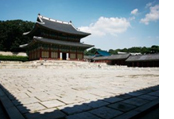
Changdeokgung palace was the second royal villa built following the construction of Gyeongbuk Palace in 1405. The palace grounds are comprised of a public palace
area, a royal family residence building, and the rear garden. It was the principal palace for many of the Joseon Kings and is the most well-preserved of the five remaining royal Joseon palaces. On those scores, Changdeokgung was designated as UNESCO’s World Cultural Heritage in February 1997. |
|
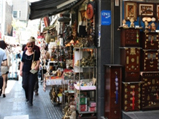
Insadong is lines with curio shops, antique furniture and handicrafts shops, calligraphy brush and mask shops, galleries, traditional Korean restaurants, tearooms, and many more intriguing places. |
|
[Half Day-3]
|
| Date / Time |
April 7. (Monday, 2014) / 19:00 ~ 23:00
April 8 (Tuesday, 2014) / 19:00 ~ 23:00
|
| Price |
KRW 69,000/person (Min. 20 People) |
| Itinerary |
COEX->Myeongdong->N Seoul Tower->COEX |
| Conditions |
- Including all admission fees
- Transportation by bus
- With an English speaking guide assistance
- Excluding dinner
|
|
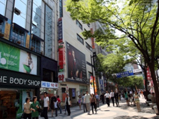
Myeong-dong is one of the primary shopping districts featuring mid-to-high priced retail stores and international brand outlets as well as Korean cosmetics brands. It is a particularly popular area for young people and tourists as a center for fashion and sight-seeing. |
|
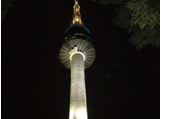 Opened to the public on October 15, 1980 and has since become a major tourist attraction. The 236.7m Seoul Tower sits atop Namsan Mt. (243m), as the structure was renamed ‘N Seoul Tower.’ The letter ‘N’ stands for the tower’s ‘new’ look, which resulted from a 15 billion won remodeling in Dec 2005. Seoul Tower offers panoramic views of Seoul and the surrounding areas. The view is so stunning that many consider Seoul Tower the best tower in Asia. Opened to the public on October 15, 1980 and has since become a major tourist attraction. The 236.7m Seoul Tower sits atop Namsan Mt. (243m), as the structure was renamed ‘N Seoul Tower.’ The letter ‘N’ stands for the tower’s ‘new’ look, which resulted from a 15 billion won remodeling in Dec 2005. Seoul Tower offers panoramic views of Seoul and the surrounding areas. The view is so stunning that many consider Seoul Tower the best tower in Asia. |
|
[Shopping & Night Tour 1]
|
| Date / Time |
April 7. (Monday, 2014) / 19:00 ~ 23:00April 8 (Tuesday, 2014) / 19:00 ~ 23:00 |
| Price |
KRW 69,000/person (Min. 20 People) |
| Itinerary |
COEX->Dongdaemun Shopping Complex->N Seoul Tower->COEX |
| Conditions |
- Including all admission fees
- Transportation by 45-seated fully air-conditioning bus
- With an English speaking guide assistance
- Including lunch |
|
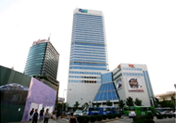 Opened to the public on October 15, 1980 and has since become a major tourist attraction. The 236.7m Seoul Tower sits atop Namsan Mt. (243m), as the structure was renamed ‘N Seoul Tower.’ The letter ‘N’ stands for the tower’s ‘new’ look, which resulted from a 15 billion won remodeling in Dec 2005. Seoul Tower offers panoramic views of Seoul and the surrounding areas. The view is so stunning that many consider Seoul Tower the best tower in Asia. Opened to the public on October 15, 1980 and has since become a major tourist attraction. The 236.7m Seoul Tower sits atop Namsan Mt. (243m), as the structure was renamed ‘N Seoul Tower.’ The letter ‘N’ stands for the tower’s ‘new’ look, which resulted from a 15 billion won remodeling in Dec 2005. Seoul Tower offers panoramic views of Seoul and the surrounding areas. The view is so stunning that many consider Seoul Tower the best tower in Asia. |
|
 Opened to the public on October 15, 1980 and has since become a major tourist attraction. The 236.7m Seoul Tower sits atop Namsan Mt. (243m), as the structure was renamed ‘N Seoul Tower.’ The letter ‘N’ stands for the tower’s ‘new’ look, which resulted from a 15 billion won remodeling in Dec 2005. Seoul Tower offers panoramic views of Seoul and the surrounding areas. The view is so stunning that many consider Seoul Tower the best tower in Asia. Opened to the public on October 15, 1980 and has since become a major tourist attraction. The 236.7m Seoul Tower sits atop Namsan Mt. (243m), as the structure was renamed ‘N Seoul Tower.’ The letter ‘N’ stands for the tower’s ‘new’ look, which resulted from a 15 billion won remodeling in Dec 2005. Seoul Tower offers panoramic views of Seoul and the surrounding areas. The view is so stunning that many consider Seoul Tower the best tower in Asia. |
|
[Pre-Tour 1]
|
| Date / Time |
April 6. (Sunday, 2014) – April 7. (Monday, 2014) |
| Price |
KRW 400,000/Person (Min. 20 People) |
| Itinerary |
Day 1: Seoul->Cheonmachong Tomb->Gyeongju National Musium->Anapji Pond->Hotel
Day 2: Hotel->Bulguksa Temple->Seokguram Grotto->Seoul |
| Conditions |
- Including all admission fees and accommodation (double room)
- Transportation by 45-seated fully air-conditioning bus
- With an English speaking guide assistance
- Including breakfast and 2 lunches |
|
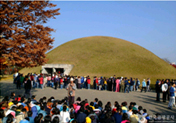 The Gyeongju National Museum is a museum in Gyeongju, North Gyeongsang Province, South Korea. Its holdings are largely devoted to relics of the Silla kingdom, of which Gyeongju was the capital. The Gyeongju National Museum is a museum in Gyeongju, North Gyeongsang Province, South Korea. Its holdings are largely devoted to relics of the Silla kingdom, of which Gyeongju was the capital.
The museum is located immediately adjacent to the royal tomb complex, in an area which also includes the Gyerim forest, Cheomseongdae observatory, Banwolseong palace, and Anapji Pond. |
|
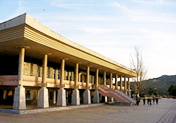 According to the historical records of ‘Samguk-sagi,’ Anapji Pond was built during the 14th year of King Munmu (in power 661-681 AD) of the Silla Kingdom (57 BC-935 AD). Small mountains were created inside the palace walls, beautiful flowers were planted, and rare animals were brought in to create an exquisitely exotic garden fit for royalty. The pond was originally built in Wolseung Fortress (erected in 101 AD during the Silla period), but the fortress was destroyed and now lies in ruins. In 1974, an excavation project revealed large spherical shapes (measuring 200 meters in diameter and 180 meters in height) which indicated that 3 islands had been located in the pond. Thanks to these important findings and existing historical records, Anapji Pond has been restored to nearly its former glory. According to the historical records of ‘Samguk-sagi,’ Anapji Pond was built during the 14th year of King Munmu (in power 661-681 AD) of the Silla Kingdom (57 BC-935 AD). Small mountains were created inside the palace walls, beautiful flowers were planted, and rare animals were brought in to create an exquisitely exotic garden fit for royalty. The pond was originally built in Wolseung Fortress (erected in 101 AD during the Silla period), but the fortress was destroyed and now lies in ruins. In 1974, an excavation project revealed large spherical shapes (measuring 200 meters in diameter and 180 meters in height) which indicated that 3 islands had been located in the pond. Thanks to these important findings and existing historical records, Anapji Pond has been restored to nearly its former glory. |
|
 Bulguksa Temple is the representative relic of Gyeongju and was designated as a World Cultural Asset by UNESCO in 1995. The beauty of the temple itself and the artistic touch of the stone relics are known throughout the world Bulguksa Temple is the representative relic of Gyeongju and was designated as a World Cultural Asset by UNESCO in 1995. The beauty of the temple itself and the artistic touch of the stone relics are known throughout the world |
|
 Seokguram, located on Tohamsan Mountain, is the representative stone temple of Korea. The official name of Seokguram, National Treasure No. 24, is Seokguram Seokgul. Designated as World Cultural Heritage Site by UNESCO in 1995, it is an artificial stone temple made of granite. The construction was started by Kim Dae-Seong (700-774) in 751 during the reign of King Gyeong-Deok (742-765) of the Silla Kingdom (57 B.C.-A.D. 935) and it was finished twenty-four years later in 774, during the reign of King Hye-Gong (765-780). Seokguram, located on Tohamsan Mountain, is the representative stone temple of Korea. The official name of Seokguram, National Treasure No. 24, is Seokguram Seokgul. Designated as World Cultural Heritage Site by UNESCO in 1995, it is an artificial stone temple made of granite. The construction was started by Kim Dae-Seong (700-774) in 751 during the reign of King Gyeong-Deok (742-765) of the Silla Kingdom (57 B.C.-A.D. 935) and it was finished twenty-four years later in 774, during the reign of King Hye-Gong (765-780). |
|
[Pre-Tour 2]
|
| Date / Time |
April 6. (Sunday, 2014) – April 7. (Monday, 2014) |
| Price |
KRW 420,000/Person (Min. 20 People) |
| Itinerary |
Day 1: Walkerhill->Seoraksan National Park ->Gwongeumseong Fortress->Sinheungsa Temple->Hotel
Day 2: Hotel->Naksansa Temple->Naksan Beach->Daepohang Port->Walkerhill |
| Conditions |
- Including all admission fees and accommodation (4 stars hotel, twin room)
- Transportation by 45-seated fully air-conditioning bus
- With an English speaking guide assistance
- Including breakfast, 2 lunches and dinner |
|
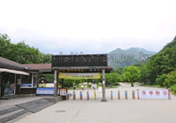 Also referred to as Seolsan and Seolbongsan, the mountain was named Seorak (‘Seol’ meaning ‘snow’ and ‘Ak’ meaning ‘big mountain’) because the snow would not melt for a long time keeping the rocks in a permanent state of white. In November 1965, the Seorak Mountain district was designated as a Natural Monument preservation area. Afterwards in December 1973, it was designated as a park preservation area, and in August 1982, as a Biosphere Preservation District by UNESCO. Also referred to as Seolsan and Seolbongsan, the mountain was named Seorak (‘Seol’ meaning ‘snow’ and ‘Ak’ meaning ‘big mountain’) because the snow would not melt for a long time keeping the rocks in a permanent state of white. In November 1965, the Seorak Mountain district was designated as a Natural Monument preservation area. Afterwards in December 1973, it was designated as a park preservation area, and in August 1982, as a Biosphere Preservation District by UNESCO. |
|
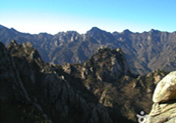 Gwongeumseong Fortress is the site of a castle ruins called Mt. Seoraksan, and it is also known as Mt. Onggeumsan Castle, or Toto Castle. It is located on the steep Dol Mountain of Mt. Seoraksan Sogongwon area. It is believed to have been built by the 23rd King of the Goryeo Period (918~1392), Gojong (1213~1259 reign). It is also called Gwon-Kim Castle, as there is a legend that two generals named Gwon and Kim, built the castle to avoid war. Gwongeumseong Fortress is the site of a castle ruins called Mt. Seoraksan, and it is also known as Mt. Onggeumsan Castle, or Toto Castle. It is located on the steep Dol Mountain of Mt. Seoraksan Sogongwon area. It is believed to have been built by the 23rd King of the Goryeo Period (918~1392), Gojong (1213~1259 reign). It is also called Gwon-Kim Castle, as there is a legend that two generals named Gwon and Kim, built the castle to avoid war. |
|
 Sinheungsa is a short 10min walk away from the entrance to Sogongwon. In fact, many visit because of its close proximity to Sogongwon. Sinheungsa is a temple which used to be called Hyangseongsa, built by Jajangyulsa (590~658), who traveled to famous mountains all over the nation, in Queen Jindeok’s (?~654) 6th year of reign. It was destroyed and rebuilt many times since. Sinheungsa is a short 10min walk away from the entrance to Sogongwon. In fact, many visit because of its close proximity to Sogongwon. Sinheungsa is a temple which used to be called Hyangseongsa, built by Jajangyulsa (590~658), who traveled to famous mountains all over the nation, in Queen Jindeok’s (?~654) 6th year of reign. It was destroyed and rebuilt many times since. |
|
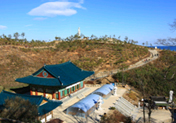 Naksansa Temple is located 4km north of Naksan Beach, and boasts a 1,300-year history. It is a temple built by Ui-Sang, the ambassador of the 30th King of Silla Period (57 BC~AD 935), and inside there is the Seven Floor Stone Tower, Dongjong, Hongyaemun, together with several other cultural assets. It was named Naksansa Temple by Ui-Sang, at the spot where he learned the prayer “Gwansae-eumbosal” from Bosal, after he returned from studying abroad in the Chinese Dang Kingdom. It was rebuilt several times afterwards, and the current building was raised in 1953. Naksansa Temple is located 4km north of Naksan Beach, and boasts a 1,300-year history. It is a temple built by Ui-Sang, the ambassador of the 30th King of Silla Period (57 BC~AD 935), and inside there is the Seven Floor Stone Tower, Dongjong, Hongyaemun, together with several other cultural assets. It was named Naksansa Temple by Ui-Sang, at the spot where he learned the prayer “Gwansae-eumbosal” from Bosal, after he returned from studying abroad in the Chinese Dang Kingdom. It was rebuilt several times afterwards, and the current building was raised in 1953. |
|
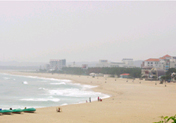 Since its opening in 1963, Naksan Beach, out of the other 3 beaches in Donghaean (East Coast) continues to have a great number of visitors every summer. Dense pine tree forests, 4 km of white sands, and shallow waters of 1.5m ~ 70m are characteristic of this beach. Since its opening in 1963, Naksan Beach, out of the other 3 beaches in Donghaean (East Coast) continues to have a great number of visitors every summer. Dense pine tree forests, 4 km of white sands, and shallow waters of 1.5m ~ 70m are characteristic of this beach.
Also, Naksansa Temple, one of the eight beautiful sights of the Gwandong area (Gwandongpalgyeong), and the Uisangdae tourist attractions surround this beach, making it even more attractive to visitors. The beautiful four seasons of Seoraksan Mountain can be witnessed in just 10 min. by car, and one can taste delicious seafood at Jeonjinhang, only a 5 min. car ride away. |
|
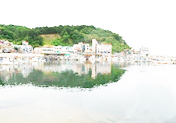 Located on the southern most point of Sokcho are the many raw fish restaurants and dried fish shops of Daepohang Port. This bustling port has become one of the most popular tourist spots for those in search of the freshest raw fish restaurants. Located on the southern most point of Sokcho are the many raw fish restaurants and dried fish shops of Daepohang Port. This bustling port has become one of the most popular tourist spots for those in search of the freshest raw fish restaurants.
At Daepohang Port it is said that the Seorak Mountains and the East Sea are gifts from nature. The port is filled with raw fish restaurants and a live fish market containing eel, flatfish, flounder, yellowtail, and plethora of other high-end seafood. Furthermore, the abundance of local dishes that can be found lining the streets includes ojingeo sundae and Gamja Songpyeon. For raw fish lovers that are in the Sokcho area, Daepohang Port is the place to be. |
|
[Pre-Tour 2]
|
| Date / Time |
April 12. (Saturday, 2014) – April 14. (Sunday, 2014) |
| Price |
KRW 700,000/Person (Min. 20 People) |
| Itinerary |
Day 1: Jeju International Airport->Jeju Glass Castle->Manjanggul Cave-> Hotel
Day 2: Hotel->Seongsan Ilchulbong Peak->Daepo Jusangjeolli Cliff->Jeju Jeolmul Recreational Forest->Jeju Bunjae Artpia Museum->Cheonjeyeon Falls->Hotel
Day 3: Hotel->Yeomiji Botanical Garden-> Jeju International Airport |
| Conditions |
- Including all admission fees and accommodation (4 stars hotel, twin room)
- Transportation by 45-seated fully air-conditioning bus
- With an English speaking guide assistance
- Including 2 hotel breakfasts, 1 lunch
- Excluding flight tickets (reservation personally) |
|
 Visitors to ‘Jeju Glass Castle’ will be entranced by its magical atmosphere. ‘Jeju Glass Castle’ is a glass art theme park featuring an exhibition hall, garden and models all made entirely out of glass. There are six themed model parks, in which over two hundred and fifty models are exhibited. These include the world’s very first all-glass labyrinth, the world’s largest glass ball and largest glass diamond, a glass stonewall, a mirror lake, and a glass bridge. There are also glass art masterpieces by internationally famous artists from Italy, the Czech Republic, Japan, and more. Visitors to ‘Jeju Glass Castle’ will be entranced by its magical atmosphere. ‘Jeju Glass Castle’ is a glass art theme park featuring an exhibition hall, garden and models all made entirely out of glass. There are six themed model parks, in which over two hundred and fifty models are exhibited. These include the world’s very first all-glass labyrinth, the world’s largest glass ball and largest glass diamond, a glass stonewall, a mirror lake, and a glass bridge. There are also glass art masterpieces by internationally famous artists from Italy, the Czech Republic, Japan, and more.
Visitors to ‘Jeju Glass Castle’ can even experience making glass artwork. In the main hall of the Glass Castle they can try making glass ornaments, glass balloons, and glass bottles. |
|
 Manjanggul Cave is one of the finest lava tunnels in the world, and is a designated natural monument. A lava tunnel is formed when the lava that was deep in the ground spouts from the peak and flows to the surface. Manjanggul Cave has a variety of interesting structures inside including 70cm lava stalagmites and the lava tube tunnels. Manjanggul Cave is one of the finest lava tunnels in the world, and is a designated natural monument. A lava tunnel is formed when the lava that was deep in the ground spouts from the peak and flows to the surface. Manjanggul Cave has a variety of interesting structures inside including 70cm lava stalagmites and the lava tube tunnels. |
|
 Seongsan Ilchulbong Peak rose from under the sea in a volcanic eruption over 100,000 years ago. Located on the eastern end of Jejudo Island, there is a huge crater at the top of Seongsan Ilchulbong Peak. The crater is about 600m in diameter and 90m high. With the 99 sharp rocks surrounding the crater, it looks like a gigantic crown. While the southeast and north sides are cliffs, the northwest side is a verdant grassy hill that is connected to the Seongsan Village. The ridge provides an ideal spot for walks and for horse riding as well. Seongsan Ilchulbong Peak rose from under the sea in a volcanic eruption over 100,000 years ago. Located on the eastern end of Jejudo Island, there is a huge crater at the top of Seongsan Ilchulbong Peak. The crater is about 600m in diameter and 90m high. With the 99 sharp rocks surrounding the crater, it looks like a gigantic crown. While the southeast and north sides are cliffs, the northwest side is a verdant grassy hill that is connected to the Seongsan Village. The ridge provides an ideal spot for walks and for horse riding as well.
The sunrise from the crater is magnificent. Also the Seongsan Ilchulbong Peak surrounded by bright yellow colored rapeseed flowers in the spring is truly a sight to behold. |
|
 If you follow the farm road 600 m to the southwest from Depo-dong, at the end of the pine tree forest is a cliff. At the base of this cliff is the Jisatgae Coast along with the imposing stone pillars. The Jusangjeolli are stone pillars piled up along the coast and is a designated cultural monument of Jejudo Island. The Jusangjeolli was formed when the lava from Mt.Hallasan erupted into the sea of Jungmun. They are rock pillars shaped like cubes or hexagons of various sizes and almost seem as if stonemasons had carved them out. The administration of the district named them ‘Jisatgae Rocks’ from their old name ‘Jisatgae’. Its 20 m cliff makes it a popular spot for high tide, sea angling. The waves of the high tides crashing into the side of the cliff provide a breathtaking view of the ocean surrounding the pillars. If you follow the farm road 600 m to the southwest from Depo-dong, at the end of the pine tree forest is a cliff. At the base of this cliff is the Jisatgae Coast along with the imposing stone pillars. The Jusangjeolli are stone pillars piled up along the coast and is a designated cultural monument of Jejudo Island. The Jusangjeolli was formed when the lava from Mt.Hallasan erupted into the sea of Jungmun. They are rock pillars shaped like cubes or hexagons of various sizes and almost seem as if stonemasons had carved them out. The administration of the district named them ‘Jisatgae Rocks’ from their old name ‘Jisatgae’. Its 20 m cliff makes it a popular spot for high tide, sea angling. The waves of the high tides crashing into the side of the cliff provide a breathtaking view of the ocean surrounding the pillars. |
|
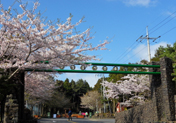 Jeju Jeolmul Natural Recreation Forest is located northeast of Hallasan Mountain on Jeju Island. Jeolmul Oreum, the park’s main mountain, is famous for its beautiful Japanese cedar forest. Jeolmul Oreum is about 697m high and created by volcanic activity. The peak boasts amazing views. On clear days, it is even possible to see all the way to Seongsan Ilchubong on the east coast of the island. Jeju Jeolmul Natural Recreation Forest is located northeast of Hallasan Mountain on Jeju Island. Jeolmul Oreum, the park’s main mountain, is famous for its beautiful Japanese cedar forest. Jeolmul Oreum is about 697m high and created by volcanic activity. The peak boasts amazing views. On clear days, it is even possible to see all the way to Seongsan Ilchubong on the east coast of the island. |
|
 Bunjae Artpia first opened its doors at Jeju’s Bunjae Artpia in July of 1992, and is now the world’s largest botanical garden with a total landscape of approximately 39,700m². This garden is rich with maple trees, wisterias and pine trees that are between 30 to 300 years old. Roughly 100 rare species of trees can also be found in the garden. The garden possesses approximately 1,700 trees, and also boasts 100,000 of its Jeju wild flowers, orchids, and other various garden trees and plants which collectively form a unique scenic harmony, Bunjae Artpia is visited by approximately 300,000 people annually, and remains a popular tour site for world public figures such as China’s Head of State Jiang Zemin and Hu Jintao, Japan’s former Prime Minister Nakasone, and more. Bunjae Artpia first opened its doors at Jeju’s Bunjae Artpia in July of 1992, and is now the world’s largest botanical garden with a total landscape of approximately 39,700m². This garden is rich with maple trees, wisterias and pine trees that are between 30 to 300 years old. Roughly 100 rare species of trees can also be found in the garden. The garden possesses approximately 1,700 trees, and also boasts 100,000 of its Jeju wild flowers, orchids, and other various garden trees and plants which collectively form a unique scenic harmony, Bunjae Artpia is visited by approximately 300,000 people annually, and remains a popular tour site for world public figures such as China’s Head of State Jiang Zemin and Hu Jintao, Japan’s former Prime Minister Nakasone, and more. |
|
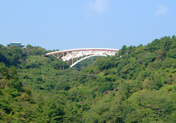
Cheonjeyeon Falls, named ‘The pond of God’, consists of 3 parts. Around the falls, a variety of plant life thrives, such as the rare ‘solipnan’ reeds. To the east, there is a cave where cold water pours from the ceiling to create a waterfall. The water from the first waterfall becomes the second and third waterfalls and flows into the sea. In Cheonjeyeon Valley, there is the “Seonimgyo Bridge” (arch bridge that has 7 nymphs carved on the side) and the octagonal “Cheonjeru tower”. The Seonimgyo is also called “Chilseonyeogyo”(meaning seven nymphs) and it connects Cheonjeyeon with the Jungmum Tourist Complex. On the surface of the Cheonjeru Tower, there is a painting that tells Cheonjeyeon’s legend of the nymph and mountain god. Every even-year in May, the Chilseonyeo Festival is held here. |
|
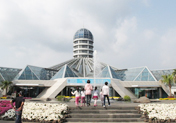 Located within Jungmun Resort, Yeomiji Botanical Garden is the best botanical garden in Asia that has a unique southern atmosphere. The indoor garden contains approximately 2,000 rare tropical and subtropical plants including Flower Garden, Water Lily Garden, Jungle Garden, Subtropical Fruits Garden, Cactus and Succulent Garden, and Observation Platform. The outdoor garden houses, Jeju Native Garden, as well as Korean, Japanese, Italian and French folk gardens. The tour train accommodating 60 persons lies between Indoor and Outdoor Garden. The Jungmun Tourist Complex, Cheonjeyeon Falls as well as a clear view of Mt. Hallasan, and nearby coast as well as Marado Island can be observed at the thirty-eight meter observation platform. Located within Jungmun Resort, Yeomiji Botanical Garden is the best botanical garden in Asia that has a unique southern atmosphere. The indoor garden contains approximately 2,000 rare tropical and subtropical plants including Flower Garden, Water Lily Garden, Jungle Garden, Subtropical Fruits Garden, Cactus and Succulent Garden, and Observation Platform. The outdoor garden houses, Jeju Native Garden, as well as Korean, Japanese, Italian and French folk gardens. The tour train accommodating 60 persons lies between Indoor and Outdoor Garden. The Jungmun Tourist Complex, Cheonjeyeon Falls as well as a clear view of Mt. Hallasan, and nearby coast as well as Marado Island can be observed at the thirty-eight meter observation platform. |
|